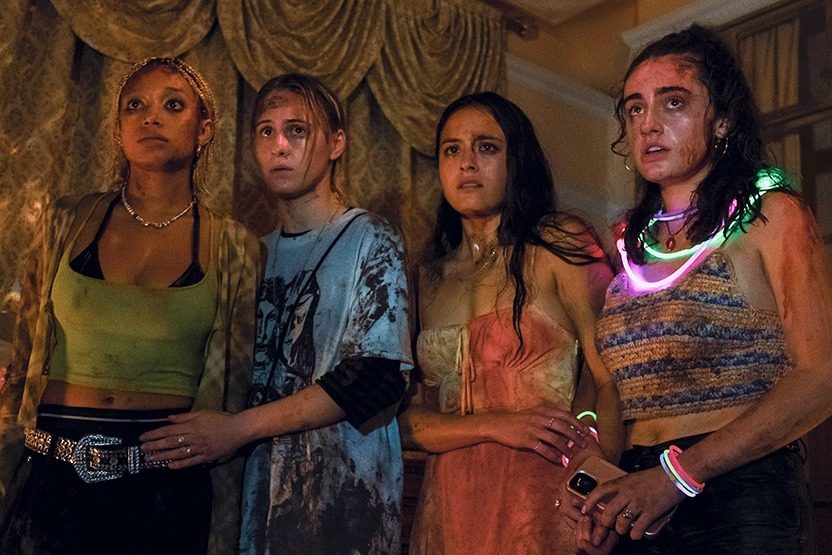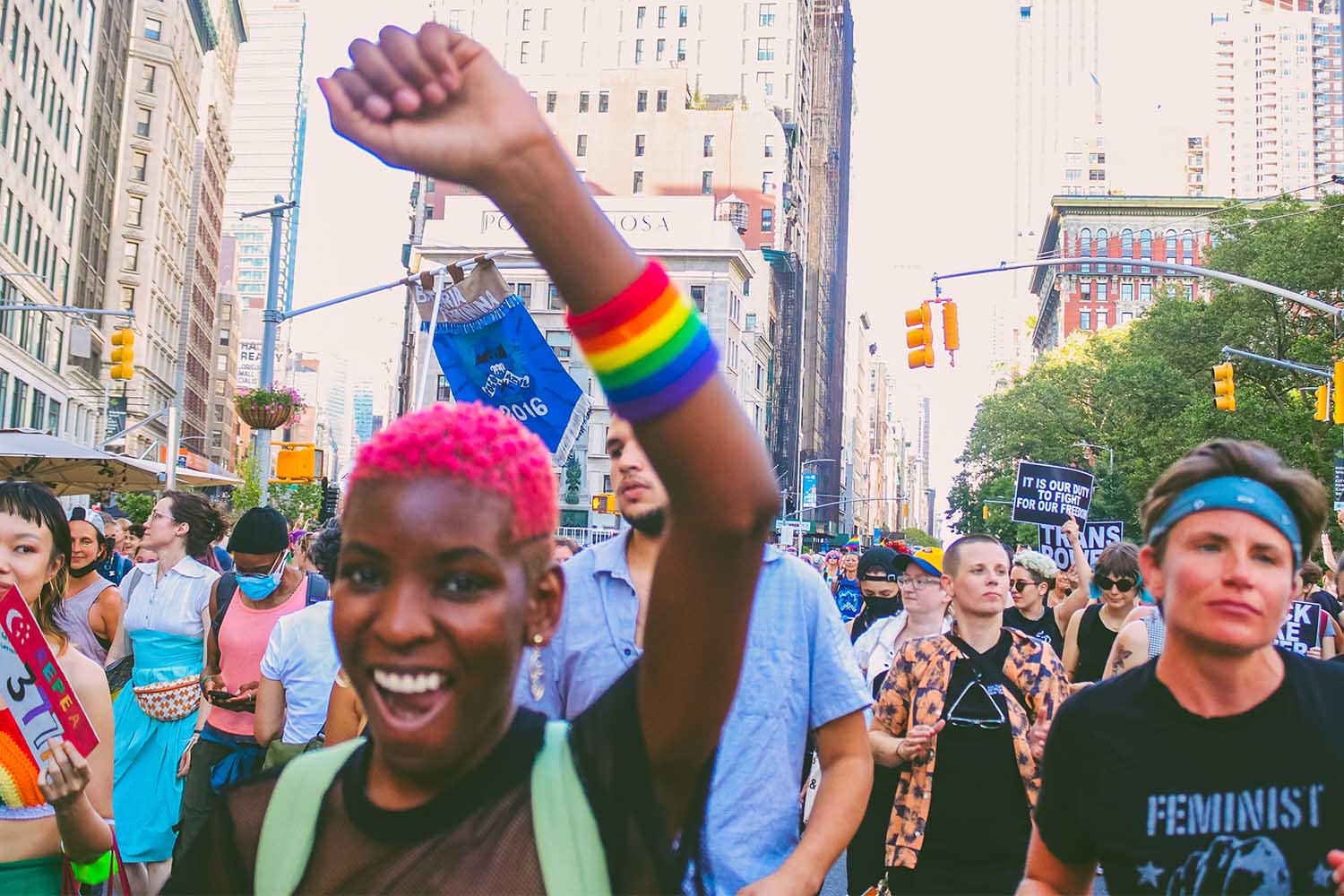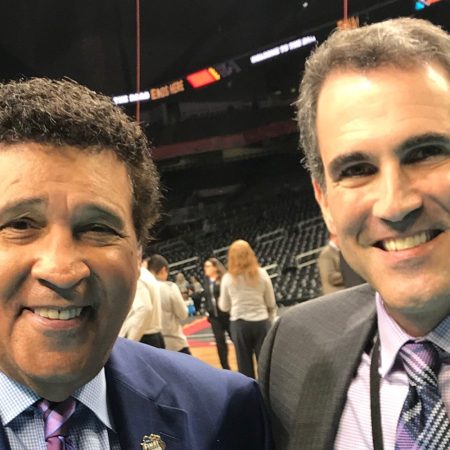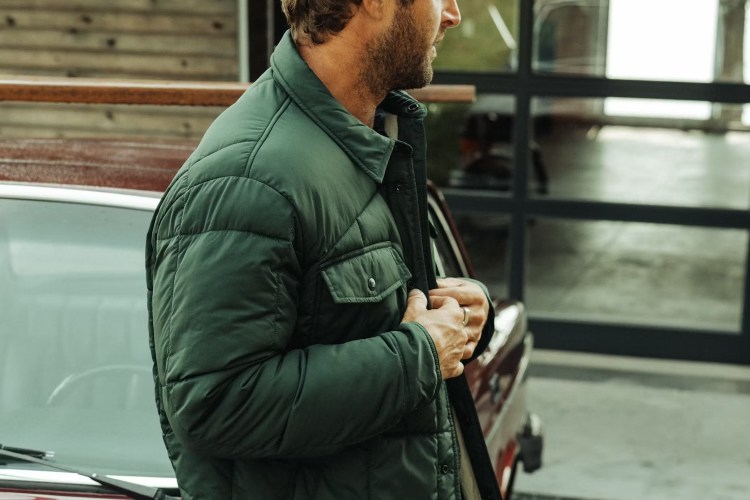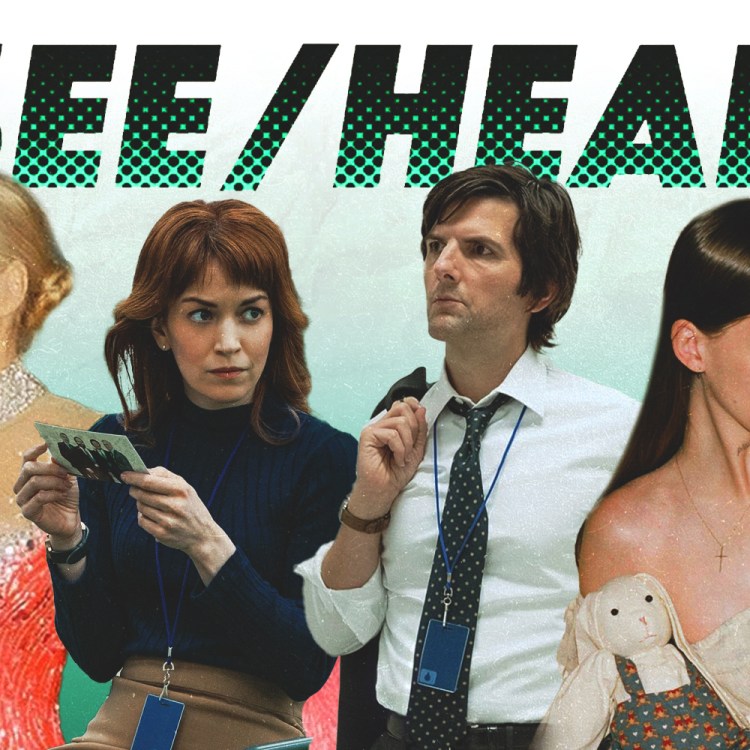Eventually, every generation gets their The Big Chill; Halina Reijn’s new film Bodies Bodies Bodies isn’t quite Gen Z’s, but it’s hard to ignore the moderate Chill in the air. A group of friends convenes for a weekend getaway, and as things take a narcotic-fueled turn, years of buried feelings break through the surface. One of their number has been incommunicado for a while, in this instance the newly sober Sophie (Amandla Stenberg), fresh out of a rehab stint and trying to refrain from the night’s various indulgences. There’s an age-inappropriate significant other shoehorned in to a group that uncomfortably accommodates them, cannily portrayed by Lee Pace as the sort of older guy into having a younger girlfriend. And an absent character nonetheless has a place in the group dynamic, though he’s just stormed off in a huff prior to the film’s beginning rather than committing suicide.
While a murder mystery puts some distance between Reijn’s sophomore feature and its Boomer-era forebear, they’re most closely linked in their aspiration to generational diagnosis. The Big Chill‘s children of the ‘60s came off like spiritually adrift phonies, guilty about having traded the idealism of counterculture for the creature comforts of convention and yet not guilty enough to do anything about it. Bodies Bodies Bodies takes aim at the nastier side of Gen Z, embodied (bodied, bodied) here by the beneficiaries of the largesse their parents sold out for. Right in the sweet spot after finishing college and before getting a real job, they’re both scions and critics of privilege, sufficiently woke to go for one another’s jugulars of class consciousness even if they’re unwilling to extend that scrutiny to themselves. They’re fluent in the social justice dialect of the online, wielding words like “toxic” and “triggering” as if they’re daggers; the film’s best line of dialogue comes from Pete Davidson, pointing out that no one even says “gaslighting” anymore unless they’re trying to prove they’ve “read the Internet.” Their accusations about who’s offing everyone come to take on the tenor of finger-pointing, another expression of the adolescent reflex to deflect responsibility and find someone to blame in times of crisis.
In an interview with Nylon, the 46-year-old Reijn described her film as “a cautionary tale about the narcissism of our times,” a big check for anyone to cash. In practice, her characterization of the Z-ers feels overly observed, informed more by anthropological study than lived-in understanding. It’s ironic that a script calling out discourse-besotted thinking would nonetheless fall victim to it, too overt in its intent to bottle the zeitgeist to convincingly do so. She’s far from alone in her ambitions, however, just one in a scrum of filmmakers racing to make the defining cinematic statement on Gen Z. And those who have fallen short share her general misstep as well, so eager to crack the pathology of the youths that they lose the texture of actual teenage behavior. In organizing characters under some personal theory of sociology, a writer can be prone to losing track of their humanity. If left unchecked, these creations devolve into walking thoughtpieces, with concepts occupying the vacant space that their hearts and brains should fill.
Some measure of age disparity between director and cast must be accepted, for the simple fact that kids are not usually allowed or even able to make movies. With the exception of outsider objects bottled right at the social media source, moving-picture reports on young people must come secondhand, from those with the skill and industry standing to get a project with any sort of substantial budget off the ground. The exception that proves the rule would be someone like the millennial Quebecois prodigy Xavier Dolan, whose accomplished filmography has earned prizes from the Cannes Film Festival along with a uniquely intense ire from a cadre of detractors. Those critics’ denunciations tended to indirectly address his (now-former) status as the world’s preeminent twentysomething writer-director, a living emblem of youth — he’s petulant, self-obsessed, altogether too fond of gorgeous faces and corny pop music. But he was always himself, unadulterated and un-adult, extracting his work right from the heart whereas his elders can only approximate someone else’s.
If cinema’s grown-ups can find consensus on one thing in their depictions of Gen Z, it’s an increased political awareness that’s trickled down into the fabric of their complex social ecosystems. The 21 Jump Street remake broke early ground with an inspired bit about the upended pecking order at today’s high schools, in which bullying is out and engagement with the issues makes for popularity. Young millennials were on the environmentalism bandwagon at the time, and their successors have only grown more precise in their stances. Booksmart saw the students of 2019 as a plucky, overachieving extension of liberalism, Beanie Feldstein’s Molly pinning a Ruth Bader Ginsburg poster on her bedroom wall where a healthy child might have a heartthrob of screen or stage. The recent Netflix original Moxie tried to build a bridge across the generation gap to the X-ers, hipping the junior feminists of the 2020s to the riot grrrl spirit of the ‘90s. In either case, there’s a perceptible investment in making teenagers talk and think like adults that scans as disingenuous.
Netflix has logged more hours than any other studio in their campaign to hook Gen Z eyeballs, spewing forth a full canon of wholesome teensploitation to agreeable traffic analytics. In the To All the Boys I’ve Loved Before and The Kissing Booth trilogies, both Tall Girl installments (ins-tall-ments), romcoms like Let It Snow and He’s All That — dreadful stuff, across the board — high schoolers seem to have been reverse-engineered from TikTok, their faces too smiley and their attitudes too upbeat. Politics, aside from the non-controversial notion that it’s okay to be queer, have no place in these squeaky supercuts about finding yourself and landing your crush. These kids are more interested in the planning and execution of Instagrammable moments, always setting up picturesque dates with the performative romanticism of a prom-posal. Those that plumb darker depths, such as the profoundly horrible suicide drama All the Bright Places, still adhere to this fixation on quirky-cute activities even as they wallow in melancholia.
On the other end of the spectrum stands Sam Levinson, self-appointed voice of a generation that he does not belong to. His little-liked feature debut Assassination Nation and far more warmly received TV series Euphoria follow the same animating philosophy about how one generation absorbs the atmosphere of the America bequeathed to them by the last. Gen Z’s main inheritance is shown to be dysfunction, however, not progressivism. Zendaya’s character Rue is ominously born in the shadow of 9/11, a harbinger for a lifetime of strife she and her contemporaries will endure at the hands of their parents. Alcoholism and other addictions, repressed homosexuality, pedophilic urges and simple negligence come back around in the form of complexes and sexual neuroses; here, daddy issues can have life-or-death stakes. In his over-the-top melodrama that treats every day like the end of the world, Levinson actually gets pretty close to the hormonal intensity of the puberty years, even if the extreme behavior of his characters bears little resemblance to reality.
Mundanity is much closer to the essence of the teenage experience, regardless of the non-stop stimuli of the internet now squawking from inside jean pockets. Since time immemorial, youths have mastered the art of hanging out, a comfy state of inactivity that the typical screenplay’s emphasis on forward motion would resist. But those closest to the hole leave room to do nothing and find authenticity in the vacancy. Jane Schoenbrun’s unsettling, enigmatic We’re All Going to the World’s Fair brims with Big Ideas about Gen Z’s enclosure of digital isolation, while couching them in a true-to-life naturalism. Casey (Anna Cobb) spends most of her time online, in her bedroom, forging parasocial connections through the internet. Well-measured school shooting drama The Fallout understands this as well, showing how the response to the deluge of tragedy can still be the classically teenaged blasé disaffection. In a standout scene, a survivor lies on her couch texting as her little sister records several takes of a TikTok dance behind her. The repetition reveals the fakery, a savvy and subtle way to convey how meaningless the everyday feels in the wake of the unthinkable.
The situation will inevitably improve as Gen Z ages, the oldest among them already out of college and the youngest getting ready to enroll. But before they can speak for themselves, we’ll get a pack of telling interlocutions from their unofficial representatives, mostly well-meaning sympathizers making sense of their own curiosities and confusions. These are the accounts that will stick around while memory of the fogeyish alarmism over smartphone addiction will fade. This is how American culture has worked as long as it’s divvied itself into generations: the cycles of panic wither away, exposed as the anxiety of the aging, and leave projection that says more about the authors than subjects.
This article was featured in the InsideHook newsletter. Sign up now.
